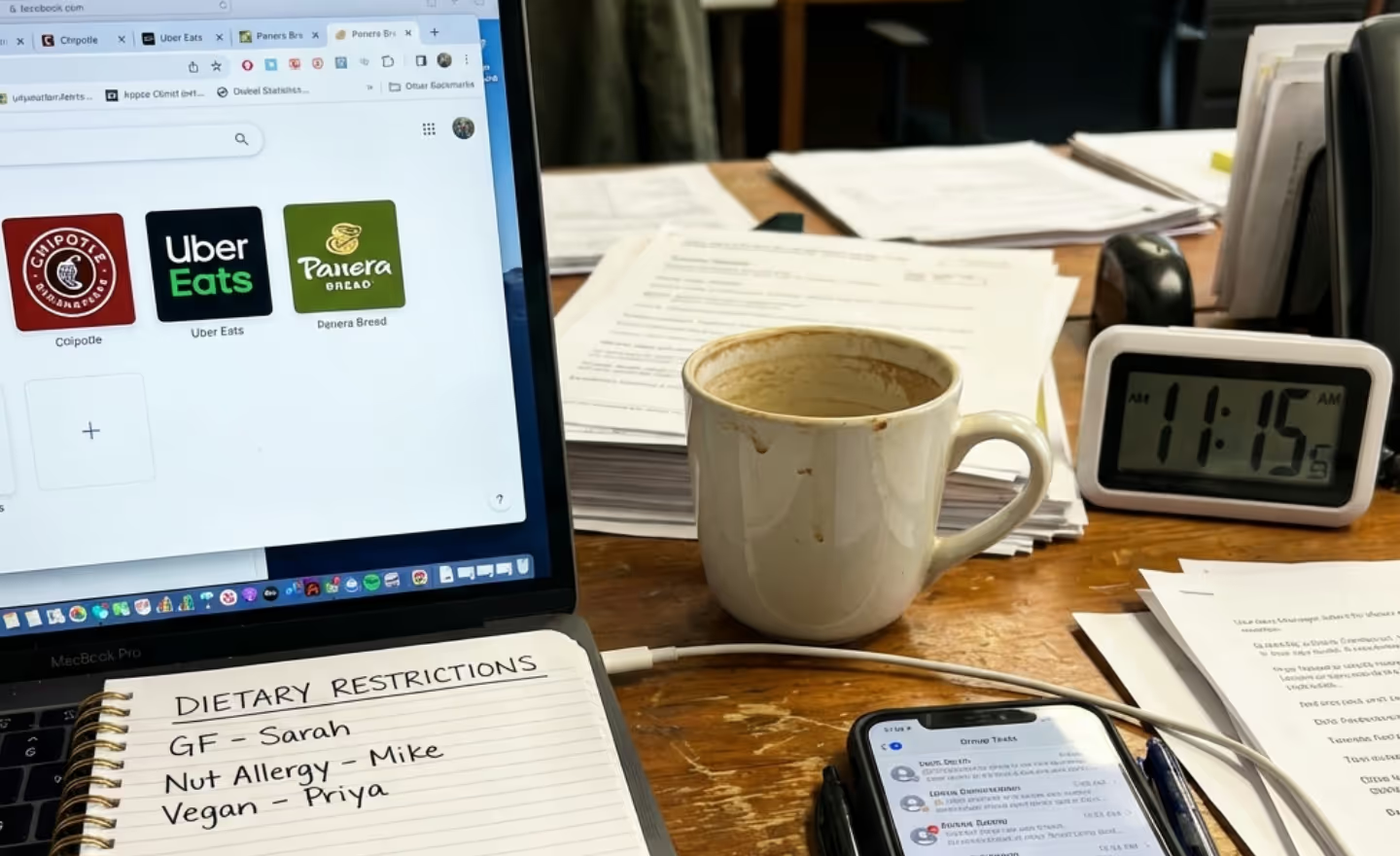Choosing a meal benefits partner shapes employee experience, finance controls, IT risk, and culture. Use this vendor-neutral checklist to evaluate platforms on facts, not claims. Benchmarks are included so readers know what "excellent" looks like.
How to use this guide
- Bring HR, Workplace, Finance, and IT to the table.
- Ask each question, request evidence, and score vendors consistently.
- Save the benchmarks as sanity checks. They keep the conversation grounded.
- Note: Benchmarks cited represent standards from leading vendors and industry research. Actual performance varies by vendor model, market, and scale.
Operations and Reliability
1) What are your written SLAs and your 12‑month performance against them?
Ask for order accuracy, on‑time delivery, support response times, and platform uptime. Request monthly performance with methodology, not just a single average. Benchmark to cite: 96-99% on-time delivery and 98-99% order accuracy indicate top-tier execution. Industry research shows 95% is "good" performance; top vendors consistently exceed this by 3+ percentage points.
2) How do you define and measure on‑time delivery?
Clarify the timing window, handling of partial drops, weather exceptions, and location‑level variance. Ask for percentiles, not only averages. Industry standard: Leading corporate catering vendors define on-time as delivery within a 15-minute window before the scheduled time. Consumer delivery services use much wider windows (2-4 hours).
3) What is your live support first‑response time and which channels are available?
Require 24/7 coverage by chat, phone, and email. Ask for median and 95th percentile response times and target staffing ratios. Benchmark to cite: Sub-40-second response time to reach a live agent is above-average performance; best-in-class platforms achieve under 30 seconds for phone and chat, with elite performers hitting 10-20 seconds. Ensure vendors distinguish between automated bot responses and actual human agent response times.
4) How do you reduce food waste compared with buffet catering?
Look for individualized ordering, accurate cutoffs, reminders, and donation partners. Ask for measured reductions and case data.
5) What is your restaurant network depth in our markets?
Request coverage by office location, cuisine diversity metrics, acceptance rate, and partner quality standards. Confirm packaging and labeling expectations for individual meals.
Policy Controls and Program Design
6) How granular are your allowance rules and spend controls?
Confirm unique amounts by org unit, day of week, hours of use, merchant restrictions by MCC or an allow list, and geofencing. Ask how fast policy changes take effect. Benchmark to cite: Leading platforms offer extensive customization across amounts, schedule, merchants, and geofencing. Verify whether limitations exist by plan tier, geography, or customer size.
7) Can you support different rules for in‑office, hybrid, and remote employees?
You should be able to geofence office pickup, set anchor‑day allowances, and run remote stipends. Ask for separate budget and reporting views for each policy group.
8) What is your approach to promotions, fees, and price transparency?
Unpack service fees, delivery fees, small order fees, surge conditions, gratuity handling, and foreign transaction fees if relevant. Request a sample invoice set for a 30‑day period.
Finance and Accounting
9) Which budgeting and reconciliation features are available out of the box?
Expect cost centers, GL codes, per‑team budgets, and export scheduling. Ask for audit logs that show every change to policies and budgets.
10) What data exports and integrations support month‑end close?
Require scheduled CSV or Excel, and API options. Confirm receipt attachment at the transaction level, plus summarized rollups by department, office, and policy.
11) How are refunds, credits, and order issues handled financially?
Ask for standard timelines, automatic credit application, visibility for Finance, and how exceptions appear in exports.
IT, Security, and Compliance
12) Which SSO and HRIS integrations do you support and how often do you sync?
Expect SAML or OIDC for SSO plus SCIM for user provisioning. Ask about real-time or nightly sync, field mapping, and guaranteed deprovisioning timelines. Note: Real-time sync is increasingly expected for critical employee lifecycle events (onboarding, offboarding, role changes), while batch/nightly sync is acceptable for reporting and analytics.
13) What are your data protection and data residency practices?
Confirm encryption in transit (TLS 1.2+ minimum) and at rest (AES-256 standard), minimal data collection, retention periods, deletion SLAs, and documented subprocessors. Ask for SOC 2 Type II or ISO 27001 reports. Verify options for US and EU residency where relevant. Industry standard: These are baseline requirements for B2B SaaS platforms handling financial and employee data in 2025.
14) What are the contract terms for termination and data return?
Clarify term length, notice requirements, early termination fees, portability of balances, and final data export formats. Ensure there are no punitive clauses if you scale down. Ask specifically about data ownership, and export capabilities.
Employee Experience
15) How do you measure and report employee satisfaction?
Ask how vendors track user satisfaction (Net Promoter Score, satisfaction surveys, etc.), what their average scores are, and how often they report results. Request information about feedback loops and how employee preferences influence menu planning or service improvements.
Vendor Viability and Partnership
16) What is your company track record and client retention rate?
Ask how long the company has been in business, their annual client retention rate, and financial stability indicators. Request 3 reference calls from organizations similar in size, industry, and geography. Confirm account manager-to-client ratios, escalation procedures, and how they ensure support continuity.
17) What metrics do you provide to demonstrate program value?
Ask what baseline measurements the vendor helps establish (utilization, satisfaction, productivity, retention, health outcomes) and how they track improvement over time. Request benchmark data from comparable organizations and confirm they provide quarterly business reviews with data-driven recommendations.
Sustainability and Social Impact
18) What are your sustainability commitments and ESG practices?
Ask about carbon footprint reduction targets, food waste reduction, sustainable packaging practices, meal donations, and ethical sourcing commitments. Request documentation of sustainability certifications (ISO 14001, B Corp, Carbon Trust, etc.) and inquire about supplier diversity programs (minority-owned, women-owned, disadvantaged businesses).






